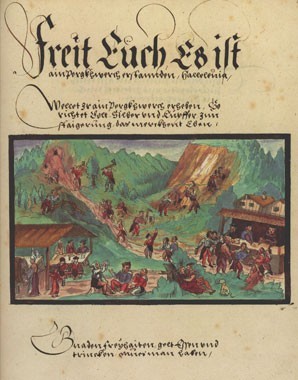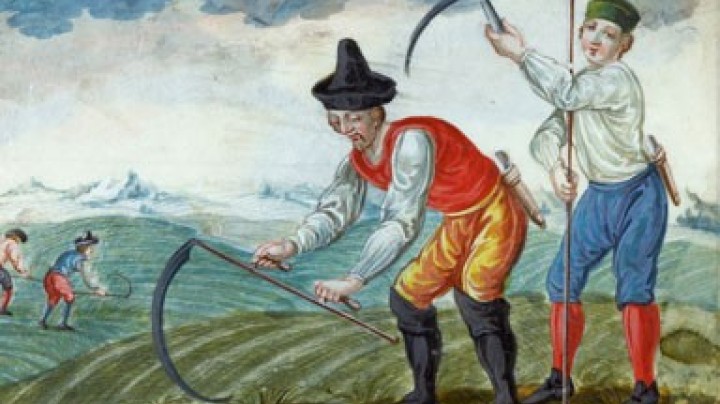The knife’s edge – Scythes and knives as big sellers
Many different trades were employed in the manufacture of iron goods. The scythes and knives made by smiths in the Eisenwurzen became big sellers way beyond the region itself.
From the late Middle Ages on the number of businesses making specialist iron products increased, and their preferred location was the region known as the Eisenwurzen. In addition to blacksmiths and locksmiths there were smiths specializing in the making of chains, Jew’s harps, blades, nails, scythes and many other items. An important centre of the iron industry was the town of Steyr, where a dedicated iron trading company was founded in 1583. It was above all the makers of saws, knives and other cutting tools who were of more than just regional importance: around 1570 more than 600 of them were employed in some 300 workshops in Steyr alone. The manufacture of scythes, also an export-oriented business, was one of the most important branches of the Austrian iron processing industry until well into the nineteenth century. As early as the middle of the sixteenth century the manufacture of scythes took place increasingly in large workshops. The use of new production techniques enabled both the number and the quality of the scythes made to be increased. While some twenty scythes per day could be made using a club hammer, the use of water-powered hammers enabled production to be raised to up to seventy scythes per day. The extent to which production was export-oriented is shown by the names given to different types of scythe, including Russians, Hungarians, Poles and Walachians. In addition the smiths provided their products with ‘trademarks’ and an indication of where they were produced in order to guarantee their provenance.
The trade in scythes was tied to fixed routes and sales areas laid down by the authorities. Admittedly, traders kept on trying to get round these regulations, but in doing so they ran the risk of having their goods confiscated and fines imposed on them.
















